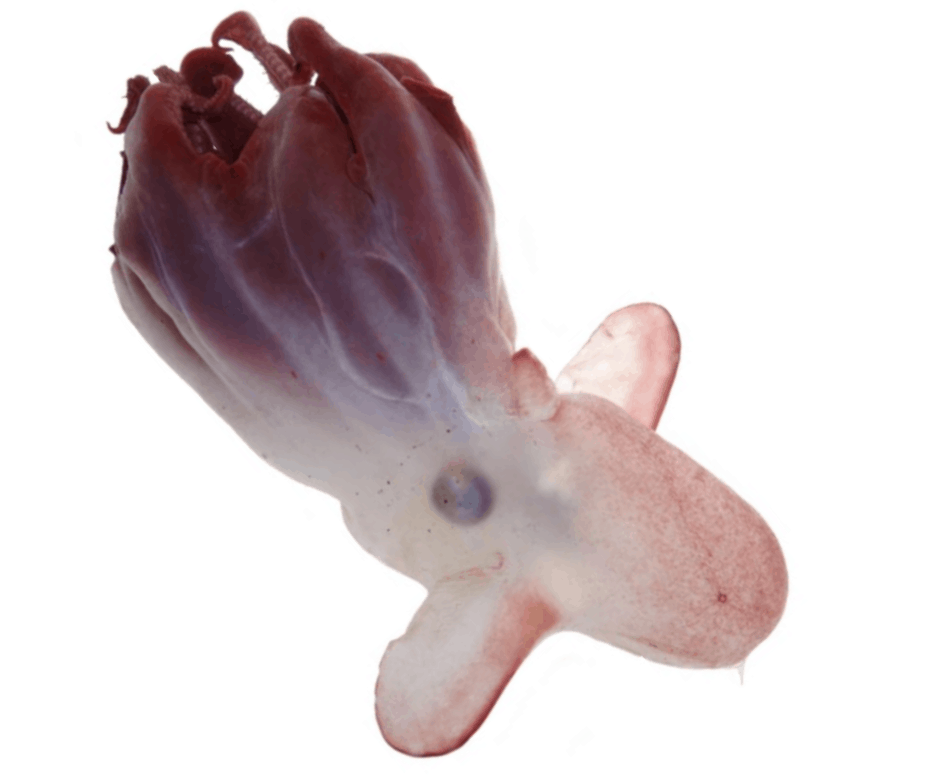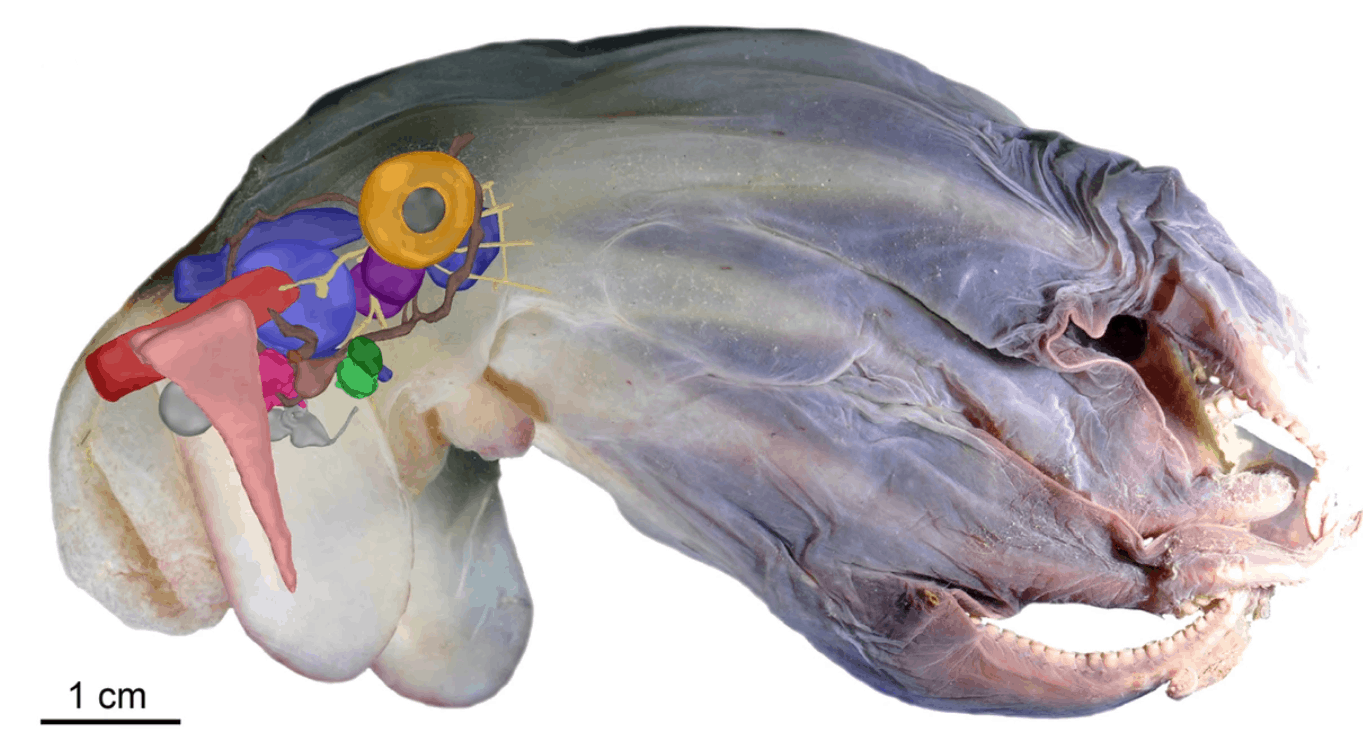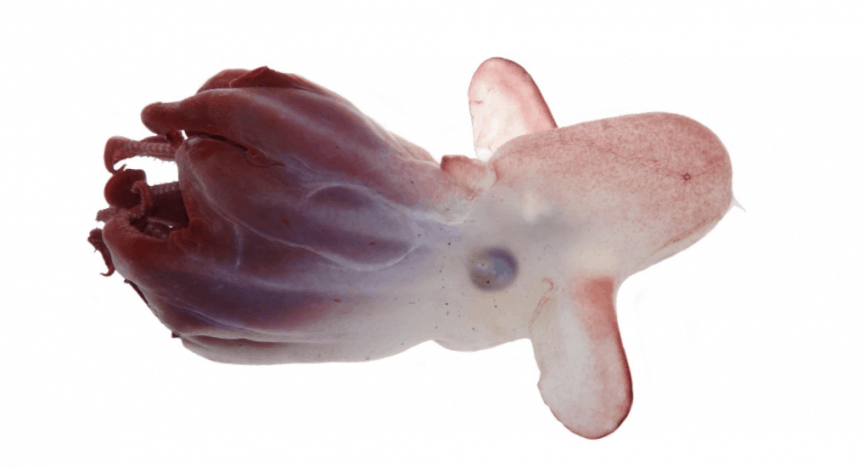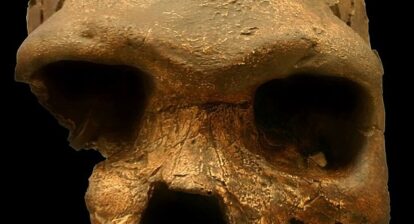Dumbo octopus are not just a species but a whole genus of deep-sea umbrella octopuses, so named because their fins resemble Disney’s Dumbo the elephant’s ears. There are 15 species that live in the deep open ocean at depths of at least 13,100 feet (4000 m) or perhaps much more deeper, making them the deepest living of all known octopuses, inhabiting a very cold and dark environment. They move by slowly flapping their ear-like fins and have distinctive webbed tentacles that resemble an umbrella when flared out, which they use to steer.
Generally, when scientists want to study octopus species they have to capture and dissect them. Now for the first time, biologists at the University of Bonn in Germany have identified this new species of Dumbo octopus called, Grimpoteuthis imperator, by using non-invasive methods.

Grimpoteuthis imperator dumbo octopus recently discovered at Emperor Seamounts in the northwestern Pacific Ocean. Image: Alexander Ziegler et al, BMC Biology, 2021
These cute cephalopods were discovered in an underwater mountain ridge in the northwest Pacific Ocean called Emperor Seamounts and researchers used a combination of high-field magnetic resonance imaging (MRI) and micro-computed tomography (micro-CT) scans, standardized measurements, digital photos, as well as minimally invasive tissue sampling for genetic analysis to identify them. The non-invasive techniques enabled reserachers to understand all external as well as internal morphological characteristics and describe in detail their shells, gills, suckers, eyes, beak, digestive tract and reproductive system. This analysis revealed them to be a separate species of dumbo octopus, previously unknown to science. In fact, some of the data showed features, such as the form of the systemic heart, that had not been described in octopus species before, while the shell, fin position, and arm length identify it as from the genus Grimpoteuthis.

Side-view with 3D model overlay of its organs. (Christina Sagorny et al, BMC Biology, 2021)
The non-invasive techniques used in this case had been used before, but only on small creatures. This study shows that such methods can be used on larger fauna, especially rare species, and enable their return – unharmed – back to their natural habitat. The dataset is publicly available for further analysis by other researchers.
Reference: Ziegler, A., Sagorny, C. Holistic description of new deep sea megafauna (Cephalopoda: Cirrata) using a minimally invasive approach. BMC Biol 19, 81 (2021). https://doi.org/10.1186/s12915-021-01000-9







